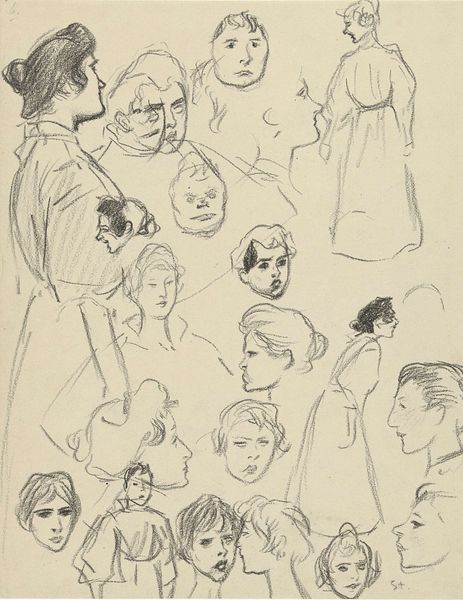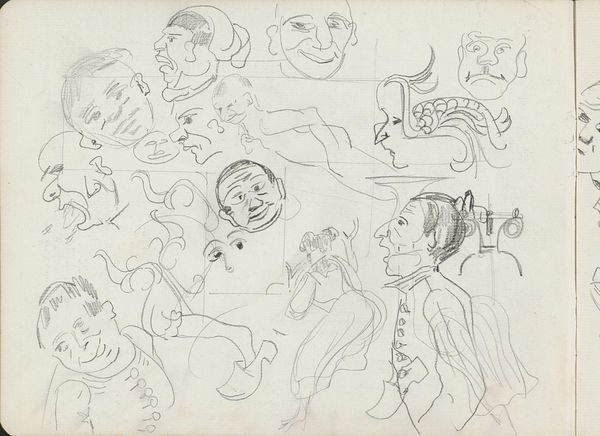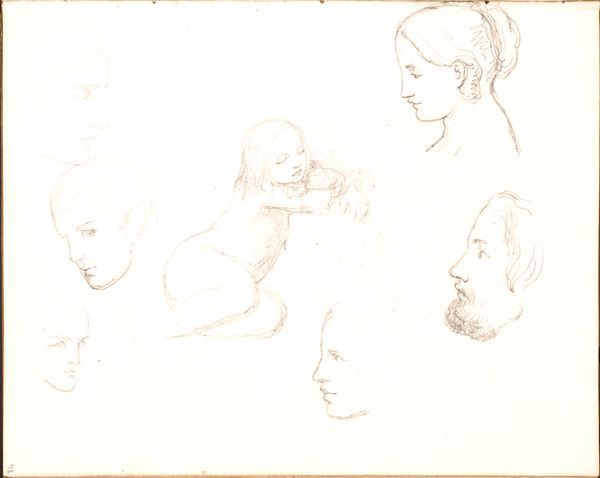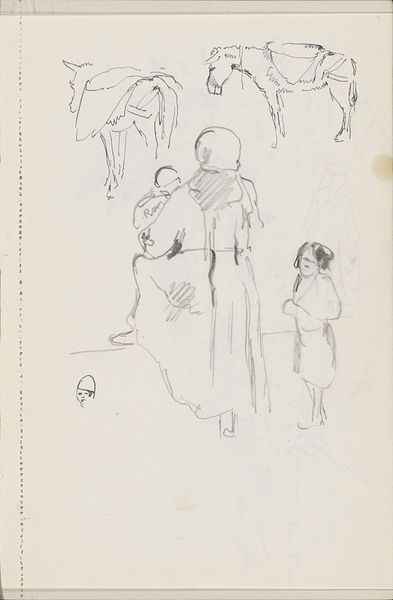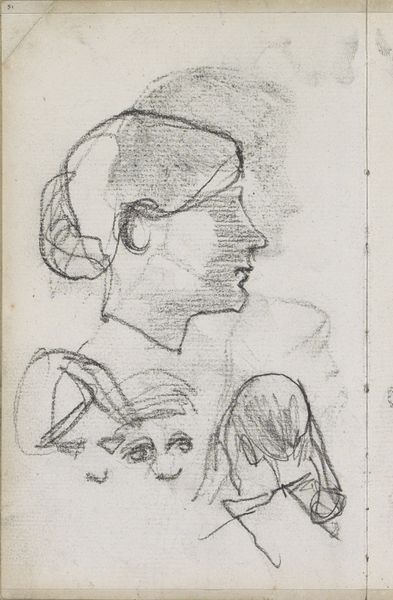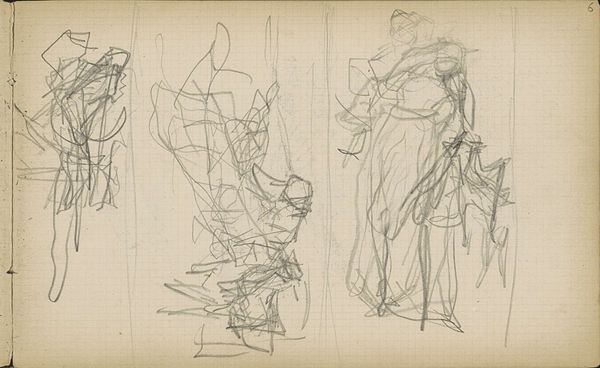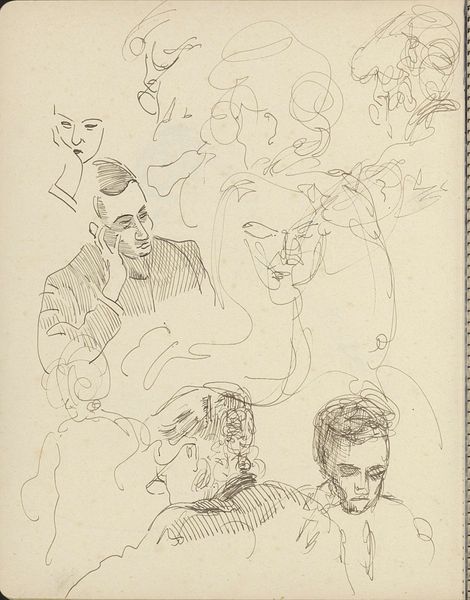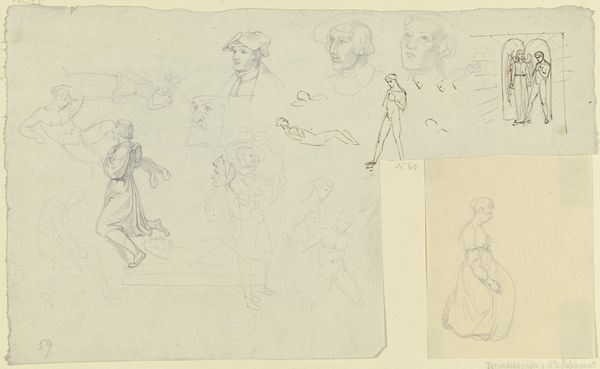
Diverse portret- en figuurstudies van vrouwen en mannen 1869 - 1923
0:00
0:00
drawing, pencil
#
portrait
#
drawing
#
comic strip sketch
#
imaginative character sketch
#
self-portrait
#
cartoon sketch
#
figuration
#
personal sketchbook
#
idea generation sketch
#
sketchwork
#
pencil
#
sketchbook drawing
#
character design for animation
#
storyboard and sketchbook work
#
academic-art
#
sketchbook art
#
modernism
Dimensions: height 358 mm, width 274 mm
Copyright: Rijks Museum: Open Domain
Curator: This captivating sketch, created by Théophile Alexandre Steinlen between 1869 and 1923, is titled "Diverse portret- en figuurstudies van vrouwen en mannen," which translates to 'Diverse Portrait and Figure Studies of Women and Men.' It’s a pencil drawing offering an intimate glimpse into Steinlen’s creative process. Editor: Immediately, I'm struck by the sheer volume of faces, their density on the page. It feels like an anonymous crowd frozen in time, a diverse collection of humanity rendered in quick, expressive strokes. Curator: Exactly. Steinlen's drawings were often preparatory studies, ideas for larger works reflecting his socio-political concerns. He depicted the lives of ordinary people, frequently highlighting marginalized figures in Parisian society. This sketch reveals his meticulous observation and documentation of different characters he encountered. Editor: You can definitely see that range here. Look at the contrasting styles within a single work, some figures almost caricatured while others have a quiet realism. I wonder about the stories of these individuals, if Steinlen sought to elevate the working classes or use them to make a political statement. Curator: It is tempting to superimpose a message to fit current discourse. While Steinlen surely aimed to capture real life, he sold his skills as a printmaker, often depicting the 'low life', as part of a system which exoticized those very milieus and reduced citizens to caricature for profit. What is depicted depends on your politics and perspective. Editor: It's a powerful reminder of the complexities inherent in representing social issues. These studies were produced, consumed and later appreciated within institutions of culture, changing meaning and value each step of the way. Thank you. Curator: It reminds us that the power to immortalize, like the power to criticize, has always had conditions of distribution.
Comments
No comments
Be the first to comment and join the conversation on the ultimate creative platform.
